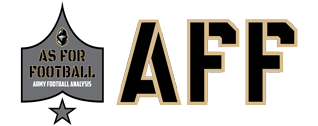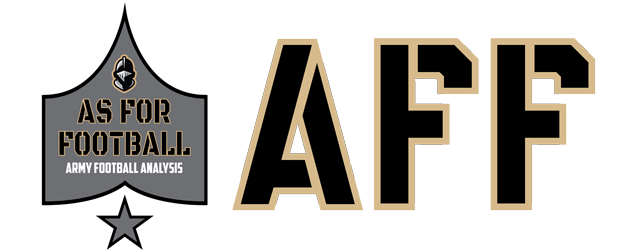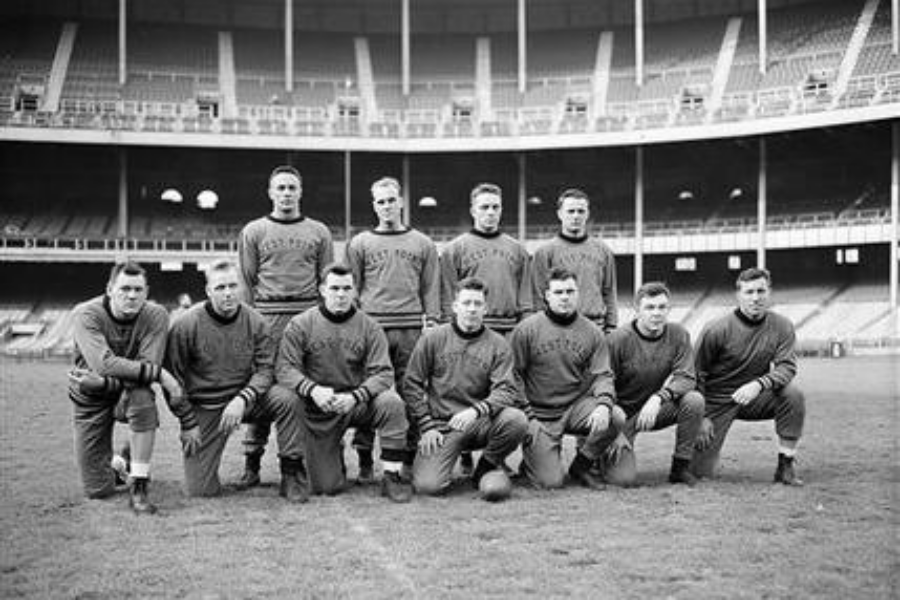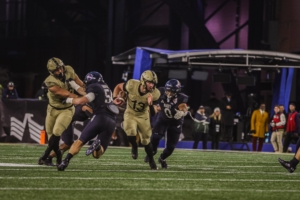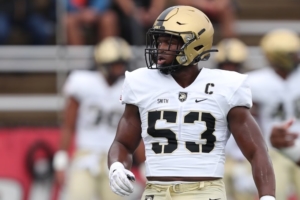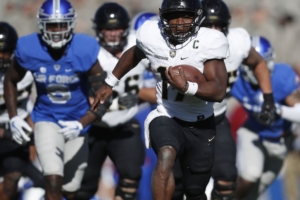Yankee Stadium and the Notre Dame-Army rivalry have long been intertwined. Countless stories from the iconic ballpark fill this rivalry’s history. Most casual college football fans know about the Four Horsemen, the “Win One For the Gipper” Game, and the 1946 “Game of the Century.” The history of this truly old school rivalry contributes to the Yankee Stadium’s very legend and mystique. Plus, Yankee Stadium plays host to arguably the most famous brand in all of sports, the New York Yankees of Major League Baseball. However, other New York ballparks have hosted the Army-Notre Dame rivalry over the years.
West Point hosted the first ten games in the series from 1913-1922. Notre Dame’s ascent to national prominence began during this time, so the game soon needed a bigger venue. Enter Ebbets Field, the longtime home of the Brooklyn Dodgers. On September 23, 1923, a mere 20 days from kickoff, Army moved the now iconic game to Brooklyn’s ballpark. A crosstown World Series matchup between the New York Giants and New York Yankees forced the change. In all, 35,000 fans witnessed Notre Dame’s Elmer Layden and Don Miller, half of the Four Horsemen, score the only touchdowns of the day, marking a Fighting Irish win, 13-0.
The most ironic thing about this year’s Notre Dame-Army game at Yankee Stadium comes via the famed matchup that created one of American sports’ most famous pictures, and it did not even occur at Yankee Stadium! The 1924 game, which Grantland Rice’s poem immortalized, occurred at the Polo Grounds, then home to the New York Giants. Elmer Layden and Jim Crowley, the other half of the Four Horsemen, scored the winning touchdowns that day, another Irish win by a score of 13-7. Attendance nearly doubled from the 1923 game, with fully 60,000 fans attending.
Thus began the status quo. From 1925 to 1946, Army-Notre Dame became a yearly fixture at Yankee Stadium, save for a one-off at Chicago’s Soldier Field in 1930.
In 1947, both schools met at South Bend for the first time, ending one of college football’s grandest traditions. A “desire from Army to schedule more intersectional games and the desire of both schools to reduce the importance of the match to a level more nearly equal to that of other college games” ended the series at Yankee Stadium. Since then, the schools have played at Yankee Stadium just twice.
In 1965, after stops at Philadelphia and South Bend, the schools again met at a New York City ballpark. However, this time they played at Shea Stadium, the then-new multi-purpose home of the NY Jets. Both schools had not considered Yankee Stadium given that Shea Stadium had been built as part of the new wave of circular, multi-purpose stadiums that filled the landscape from the 1960s to the 1990s. Add in a nighttime kickoff, the first night game in series history and one of only two such occurrences, and this is one of the strangest games in the history of the rivalry.
It is perhaps fitting, then, that this has become a forgotten game in this series, given that Army was then in its early-1960s funk and in the midst of a 4-5-1 season in Head Coach Paul Dietzel’s last year. The game itself proved forgettable. 61,000 fans saw Notre Dame win 17-0, holding Army to just 114 yards of total offense. Four years later, the rivalry returned to Yankee Stadium for the last time until 2010. But that 1965 Army-Notre Dame game was one of just five college football games played in the four-decade history of Shea Stadium.
So while one may think of Yankee Stadium when thinking of the iconic Army-Notre Dame rivalry, New York’s other iconic ballparks have played minor but often unique parts in this particular story. Granted, all the best games seem to have happened in the so-called Cathedral of Baseball. Perhaps this year’s game will prove legendary, too.
